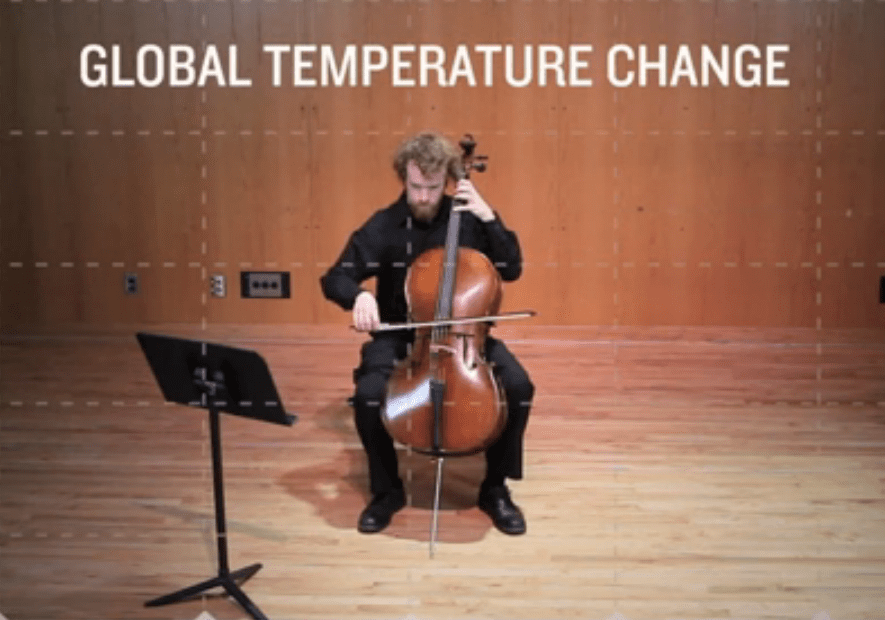University of Minnesota student (and cello player) Daniel Crawford has come up with a clever way to demonstrate the warming trend in historical temperature data. He converted the average global temperature for each year to a note, with a higher pitch indicating hotter weather. When he plays the data, the notes go up and down a bit, as you’d expect from normal variation — but the pitch of the song unmistakably gets higher and higher on average. It’s not a very beautiful song, but it’s a beautiful bit of science communication.
The data, from NASA’s Goddard Institute of Space Studies, covers 132 years (1880 to 2012). Crawford converted that information to notes covering three octaves, with the coldest year (1909) corresponding to the lowest note on the cello. For every 0.5 degrees warmer a year was, the note would rise half a step in pitch.
It’s striking to hear the average pitch increase so undeniably over the course of the composition — but it’s not as striking as the factoid that appears at the end. “Scientists predict our planet will warm by at least another 1.8 degrees Celsius by the end of the century,” says the text. “This additional warming would produce a series of notes beyond the range of human hearing.” That’s a dog whistle we should probably heed.


